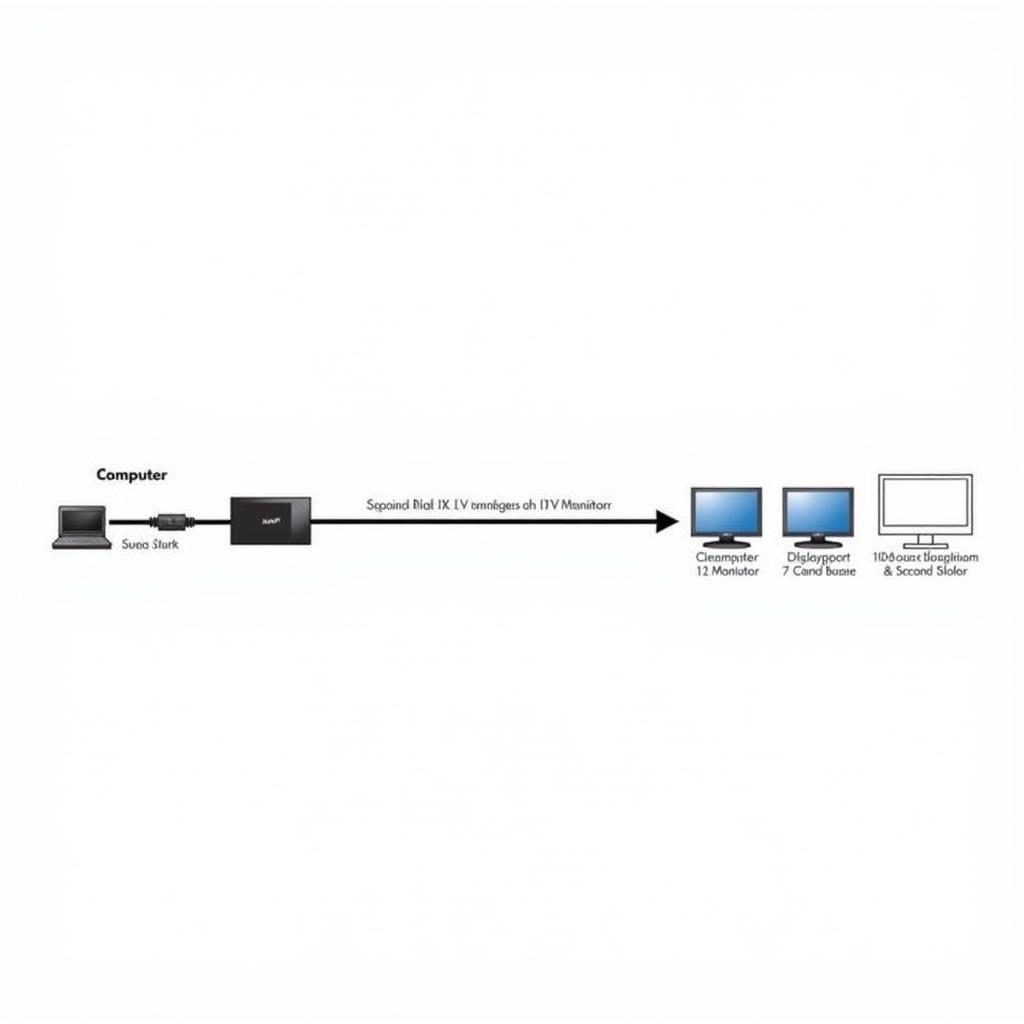Choosing between DP and HDMI can be confusing. This article will break down the key differences between DisplayPort (DP) and HDMI, helping you decide which is better for your specific needs, whether it’s for gaming, professional work, or everyday use.
Understanding the Basics: DP vs HDMI
Both DisplayPort and HDMI are digital interfaces that transmit audio and video signals from a source device (like your computer or game console) to a display device (like your monitor or TV). However, they differ in their capabilities and intended uses.
DisplayPort: Designed for Computers
DisplayPort was primarily developed for computer displays. It’s known for its high bandwidth and support for advanced features like daisy-chaining multiple monitors. This makes DP a popular choice for gamers and professionals who need high refresh rates and resolutions.
HDMI: The Entertainment Standard
HDMI, on the other hand, was designed with home entertainment in mind. It’s the standard interface for connecting devices like Blu-ray players, game consoles, and streaming boxes to TVs. While HDMI has evolved to support higher resolutions and refresh rates, it’s generally not as powerful as DisplayPort.
Key Differences: DP vs. HDMI – A Detailed Comparison
Let’s delve deeper into the specific differences between DP and HDMI.
Resolution and Refresh Rate
- DisplayPort: Supports higher resolutions and refresh rates, making it ideal for demanding tasks like gaming and video editing. The latest DisplayPort versions can handle 8K resolution at 60Hz and beyond.
- HDMI: While newer HDMI versions can also support high resolutions (up to 8K@60Hz), they generally lag behind DisplayPort in terms of maximum capabilities.
Audio Support
- DisplayPort: Supports multi-channel audio, just like HDMI.
- HDMI: Also supports multi-channel audio, making it suitable for home theater setups.
Daisy-Chaining
- DisplayPort: Allows you to connect multiple monitors to a single output on your computer, simplifying cable management.
- HDMI: Doesn’t natively support daisy-chaining. You’ll need a splitter or a receiver to connect multiple displays.
 Kết nối daisy-chain với DisplayPort
Kết nối daisy-chain với DisplayPort
Adaptability and Compatibility
- DisplayPort: Adapters are readily available for converting DP to HDMI, DVI, and VGA, offering excellent flexibility.
- HDMI: Adapters are also available for converting HDMI to other interfaces, but DP generally offers more versatile conversion options.
Cost
- DisplayPort: Cables and devices with DisplayPort are often slightly more expensive than HDMI counterparts.
- HDMI: Generally more affordable, making it a budget-friendly option for many users.
Which is Better: DP vs HDMI?
The best choice between DP and HDMI depends on your specific needs.
- For Gamers: DisplayPort is generally the better choice due to its support for higher refresh rates and adaptive sync technologies like FreeSync and G-Sync.
- For Professional Use: DisplayPort is often preferred for video editing, graphic design, and other tasks that require high resolutions and color accuracy.
- For Home Entertainment: HDMI is the standard for connecting to TVs and other home entertainment devices.
Conclusion: Making the Right Choice for Your Display Needs
Choosing between DP and HDMI ultimately comes down to balancing your needs and budget. While DisplayPort offers superior performance for demanding applications, HDMI remains the prevalent standard for home entertainment. By understanding the key differences outlined in this article, you can make an informed decision and choose the interface that best suits your specific setup. Remember to consider factors like resolution, refresh rate, and daisy-chaining capabilities when making your final decision.
FAQs
-
Can I use a DP to HDMI adapter? Yes, adapters are readily available for converting DP to HDMI.
-
Is DP better than HDMI for 4K gaming? Generally, yes, due to its higher bandwidth and refresh rate support.
-
Does HDMI 2.1 support 8K? Yes, HDMI 2.1 supports resolutions up to 8K@60Hz and even higher with DSC.
-
Can I daisy-chain monitors with HDMI? Not natively, but you can use splitters or receivers.
-
Which is cheaper, DP or HDMI? HDMI cables and devices are generally more affordable.
-
Is DP better for color accuracy? Both can offer excellent color accuracy, but DP sometimes has an edge in professional applications.
-
Do I need a special cable for high refresh rates? Yes, ensure your cable is certified for the desired resolution and refresh rate.
Other related articles you might find useful:
- Choosing the Right Monitor for Your PC
- Understanding Display Resolutions and Refresh Rates
- The Ultimate Guide to Cable Management
Need assistance? Contact us at Phone Number: 02838172459, Email: [email protected] Or visit us at 596 Đ. Hậu Giang, P.12, Quận 6, Hồ Chí Minh 70000, Vietnam. We have a 24/7 customer support team.